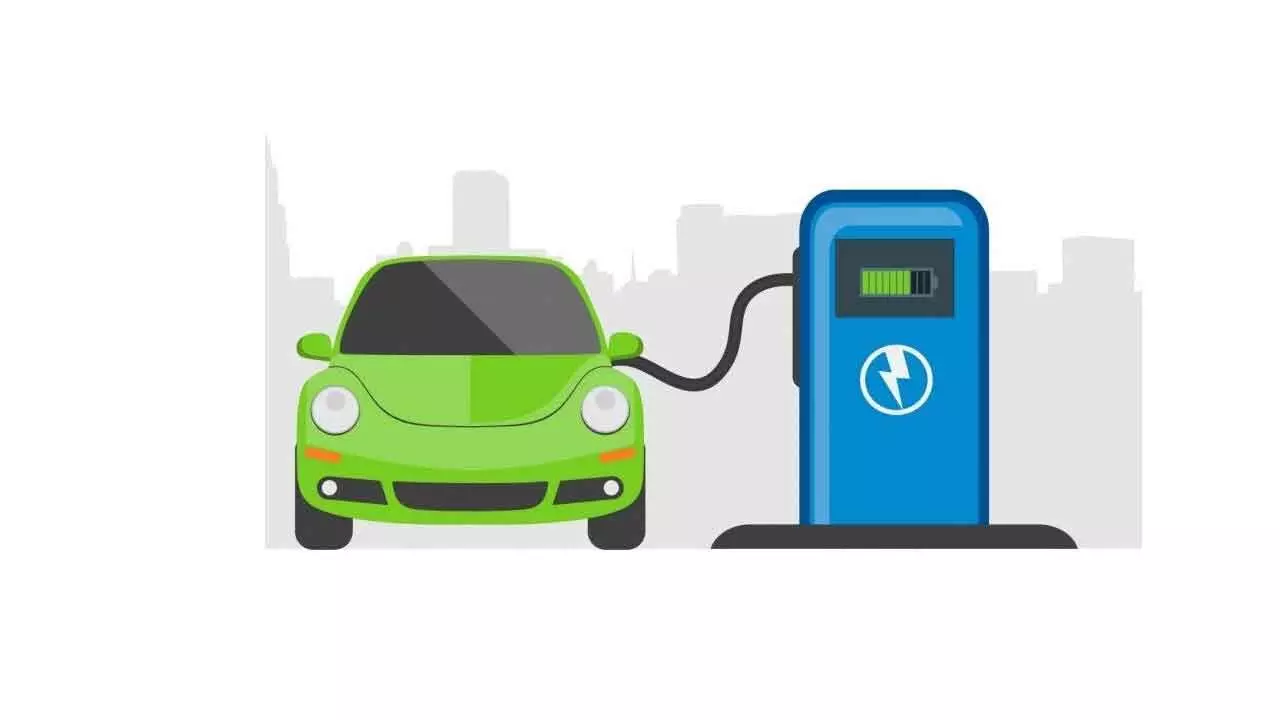PM E-DRIVE for electric vehicles enters fast lane

The scheme aims to establish a robust network of public charging stations, including 22,100 fast chargers for e-4Ws, 1,800 for e-buses, and 48,400 for e-2Ws and e-3Ws, boosting user confidence. These charging points to be installed in key cities with high electric vehicle penetration and along select highways
The ‘PM Electric Drive Revolution in Innovative Vehicle Enhancement (PM E-DRIVE)’ Scheme, recently approved by the Cabinet with a financial outlay of Rs. 10,900 crore, came into effect on October 1, 2024, and will remain in force until March 31, 2026. The primary goal of the scheme is to accelerate the adoption of electric vehicles (EVs), develop essential charging infrastructure, and establish a robust EV manufacturing ecosystem across the country. Under this scheme, electric vehicle sales have already seen a record surge, reflecting the growing momentum of EV adoption.
The PM E-DRIVE initiative promotes mass mobility by supporting public transportation systems. The key objective is to speed up the transition to electric vehicles by offering upfront incentives for EV purchases and encouraging the development of charging infrastructure. The scheme seeks to reduce transportation-related environmental impacts and improve air quality while promoting an efficient and competitive EV manufacturing sector in line with the Aatmanirbhar Bharat initiative. This will be accomplished through a phased manufacturing program (PMP) to boost domestic manufacturing and strengthen the EV supply chain.
The PM E-DRIVE scheme is implemented through the following key components:Subsidies: Demand incentives for electric vehicles such as e-2 wheelers (e-2W), e-3 wheelers (e-3W), e-ambulances, e-trucks, and other emerging categories of EVs; Grants for creating capital assets: Funding will be provided for the acquisition of electric buses (e-buses), the establishment of a comprehensive network of charging stations, and the upgrading of the Ministry of Heavy Industries (MHI) testing facilities; Administration of the Scheme including IEC (Information, Education & Communication) activities and fee for project management agency (PMA).
Surge in sales
The Ministry of Heavy Industries is leading the nationwide push for electric vehicle adoption, contributing to India’s ambitious net-zero target for 2070. Through initiatives like the Electric Mobility Promotion Scheme (EMPS) and the PM E-DRIVE schemes, electric two-wheelers (e-2W) sales have surged to 5,71,411 units in 2024-25. During the same period, sales of electric three-wheelers (e-3W), including e-rickshaws and e-carts, reached 1,164 units, while electric three-wheelers in the L5 category hit 71, 501 units.
The scheme aims to incentivize approximately 24.79 lakh electric two-wheelers (e-2Ws). Only e-2Ws equipped with advanced batteries are eligible for this incentive. The initiative is designed to incentivize around 3.2 lakh electric three-wheelers (e-3Ws), covering registered e-rickshaws/e-carts or L5 category vehicles. Only those e-3Ws with advanced battery technology are qualified for the demand incentive. The scheme is solely applicable to e-3Ws used for commercial purposes.
A budget of Rs. 500 crore has been allocated for deploying e-ambulances under this scheme.
A total of Rs. 4,391 crore is allocated for the procurement of 14,028 electric buses by State Transport Undertakings (STUs)/public transport agencies. The demand aggregation for these buses will be managed by CESL in nine major cities, with more than 40 lakh population namely Delhi, Mumbai, Kolkata, Chennai, Ahmedabad, Surat, Bangalore, Pune and Hyderabad. The scheme aims to establish a robust network of public charging stations, including 22,100 fast chargers for e-4Ws, 1,800 for e-buses, and 48,400 for e-2Ws and e-3Ws, boosting user confidence. These charging points to be installed in key cities with high electric vehicle penetration and along select highways. The total outlay for charging infrastructure under the scheme is Rs. 2,000 crore.
The scheme emphasizes demand incentives as a core component, directly aimed at increasing the adoption of electric vehicles (EVs). All EVs must be registered under the Central Motor Vehicles Rules (CMVR), 1989, to qualify for these incentives. Overall, this scheme represents a crucial step toward a cleaner, more sustainable future for transportation in India. (PIB)







